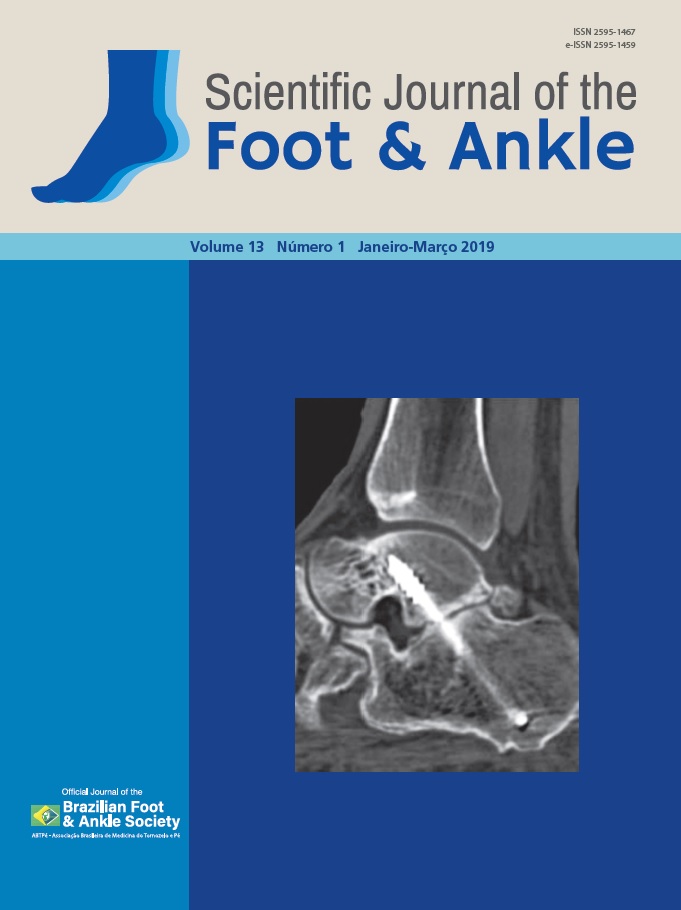Concordance analysis of adult ankle fracture classifications
DOI:
https://doi.org/10.30795/scijfootankle.2019.v13.885Keywords:
Ankle fracture/classification, Ankle fracture/diagnostic imaging, Observer variation, Ankle injuries, Reproducibility of the testsAbstract
Objective: To analyze the interobserver agreement among physicians in an orthopedy and traumatology service with knowledge and training in adult ankle fracture classifications through radiographic evaluation. Methods: A cross-sectional study was carried out in which the records of 20 patients with a diagnosis of ankle fracture in 2016 (uni-, bi- or trimalleolar), aged older than 18 years or with a closed physis, were studied. The radiographs that met the criteria were analyzed and classified according to the Danis Weber (DW), Lauge-Hansen (LH) and Arbeitsgemeinschaft für Osteosynthesefragen/Orthopaedic Trauma Association (AO/OTA) classifications by two first-year residents, two second-year residents, two third-year residents and two preceptors of the service. The conditions were identical for the observers and were performed individually once. The Kappa coefficient (K) was used to assess agreement. Results: The results showed great interobserver agreement in the DW and LH classifications, with K values equal to 0.69 and 0.64, respectively. The AO/OTA classification showed moderate agreement, with K = 0.47. Conclusion: The DW classification was the most reliable among the three classifications. The AO/OTA classification showed the lowest agreement and was the least reliable, and the LH classification was in between the others. Level of Evidence III, Diagnostic Studies; Study of non consecutive patients; without consistently applied reference “gold” standard.




